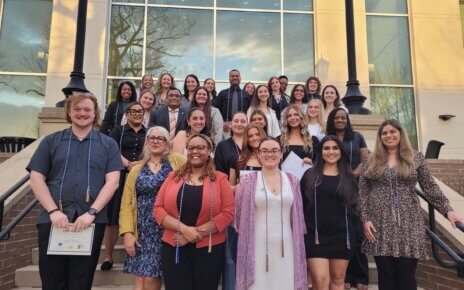It should have been fun – sitting in the Splash Zone at SeaWorld’s Shamu stadium with her two sons, watching killer whales perform impressive tricks. Instead, Gabriela Cowperthwaite felt a pit in her stomach. Seeing whales up-close in captivity made her uneasy. So she began looking into the theme park, working on a documentary called “Blackfish” – a 2013 film that would ultimately shift the way the public viewed the multibillion-dollar corporation too.
Just three years after the release of “Blackfish,” SeaWorld CEO Joel Manby announced Thursday in an op-ed published in the Los Angeles Times that the company would stop breeding orcas this year. That means that the 29 killer whales currently owned by the theme park will be the last to swim in SeaWorld tanks. The remaining orcas will live out the remainder of their lives at the company’s three SeaWorld-branded parks in Orlando, San Antonio and San Diego but will not perform in theatrical shows by 2019.
“We are proud of contributing to the evolving understanding of one of the world’s largest marine mammals,” Manby wrote. “Now we need to respond to the attitudinal change that we helped to create.”
Though Manby made no reference to “Blackfish” in his op-ed, the film was largely responsible for that “attitudinal change.” The documentary was released in theaters in July 2013 and went on to gross $2.1 million. But the film really began to make waves after it aired in October of that year on CNN, where the movie has since been broadcast more than 30 times and been seen by nearly 30 million viewers, according to the cable network.
“It’s exceedingly rare to see this kind of result,” said Amy Entelis, the co-founder of CNN Films, which acquired “Blackfish” at Sundance in January 2013. “There are a lot of good stories out there, but they don’t always see the final chapter that Gabriela is seeing at this point. We’ve had other documentaries about Steve Jobs and Glen Campbell attract many viewers during their premieres, but ‘Blackfish’ endures even after multiple viewings. It’s had a deeper impact and has been seen by far more people.”
There have been just a handful of documentaries released over the last few decades that have led to tangible change, including 2004’s “Super Size Me,” in which filmmaker Morgan Spurlock suffered serious health complications after eating only McDonald’s for 30 days. Six weeks after the film came out, the fast-food chain stopped offering super-size portions. There’s also Joe Berlinger and Bruce Sinofsky’s “Paradise Lost” trilogy, which ultimately led to the release of three Texan men who had been wrongly imprisoned for murder for nearly two decades.
“It seems to make a difference when a film is very specifically calling out a company or government official by name,” said Thom Powers, who serves as the documentary programmer at the Toronto International Film Festival. “But ‘Blackfish’ also has an enormous amount of filmmaking craft at stake. I watch 300 or 400 films a year on very worthy topics, but many of them don’t rise to a level that makes them as compelling as that movie was.”
Cowperthwaite, 45, began working on “Blackfish” in 2010 after the death of Dawn Brancheau, a SeaWorld trainer who was dragged underwater by an orca. Cowperthwaite was disturbed by the news and began exploring the idea of making a movie about what it was like to work as a killer-whale trainer.
“I didn’t necessarily think there was anything wrong with what SeaWorld was doing with their whales,” recalled Cowperthwaite, who lives in Culver City. “I had no agenda. And nobody sees documentaries, anyway. They don’t garner huge audiences. I couldn’t have imagined that the film would be like lighter fluid.”
Immediately after “Blackfish” was released, backlash against the theme park began on social media. The public boycotted a number of musical acts set to perform at SeaWorld, and celebrities, including Cher, Ellen Page and Harry Styles, urged their fans to stop visiting the parks. In 2014, attendance at the company’s 11 parks dropped 4.2 percent. In 2015, lawmakers in Sacramento and the U.S. House of Representatives proposed legislation that would keep whales out of captivity. The California Coastal Commission also proposed a ban on orca breeding at the park’s San Diego location.
And just last week, SeaWorld announced that Tilikum – the killer whale responsible for Brancheau’s death – was in declining health. Tilikum was largely the subject of “Blackfish,” as the film explored how living in captivity may have driven the whale to erratic, dangerous behavior.
All the while, Cowperthwaite remained a spokesperson for the cause. “It was constant, the amount of information I had to learn every day to continue to speak on this issue and inspire people,” Cowperthwaite said. “But it gets inside you. You can move on, but the idea becomes a part of your DNA.
“And still, I never imagined SeaWorld would stop breeding orcas. That is such a huge shift, them realizing that the grand experiment didn’t work. It’s a defining moment.”



